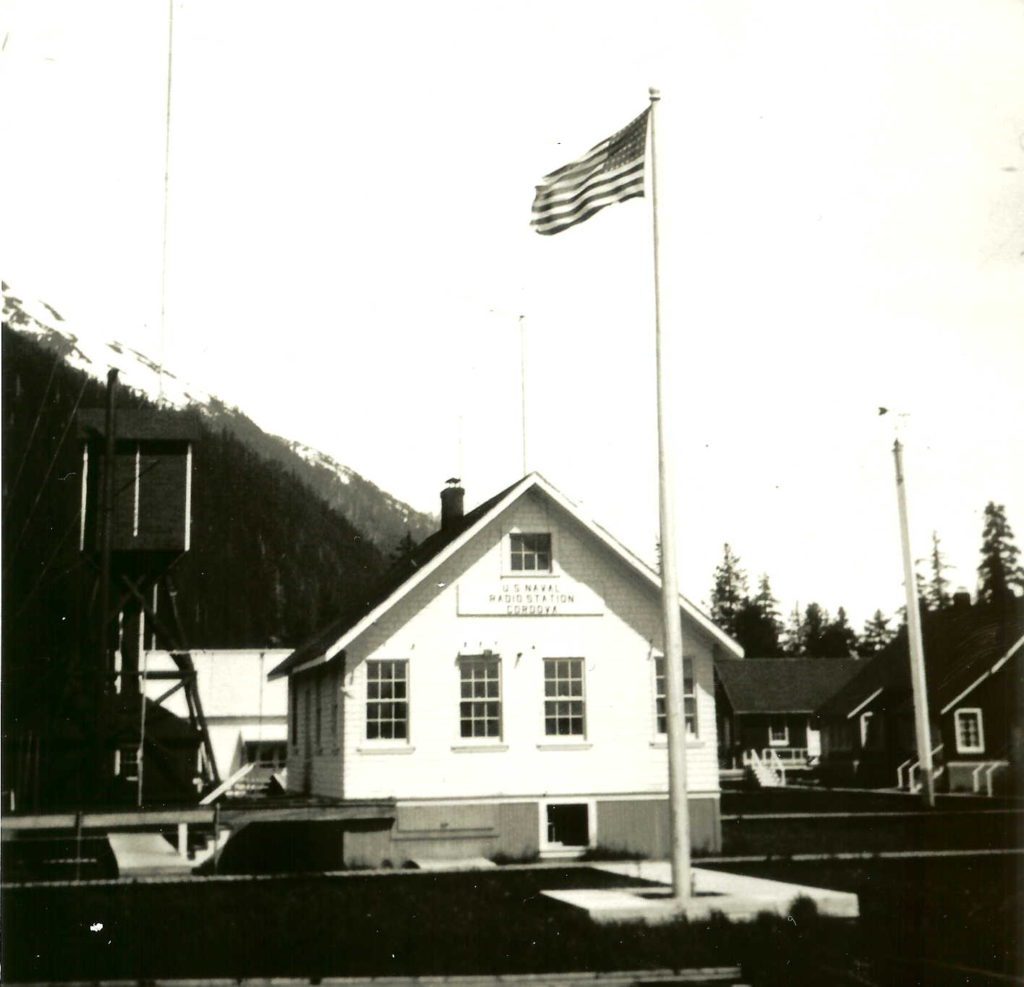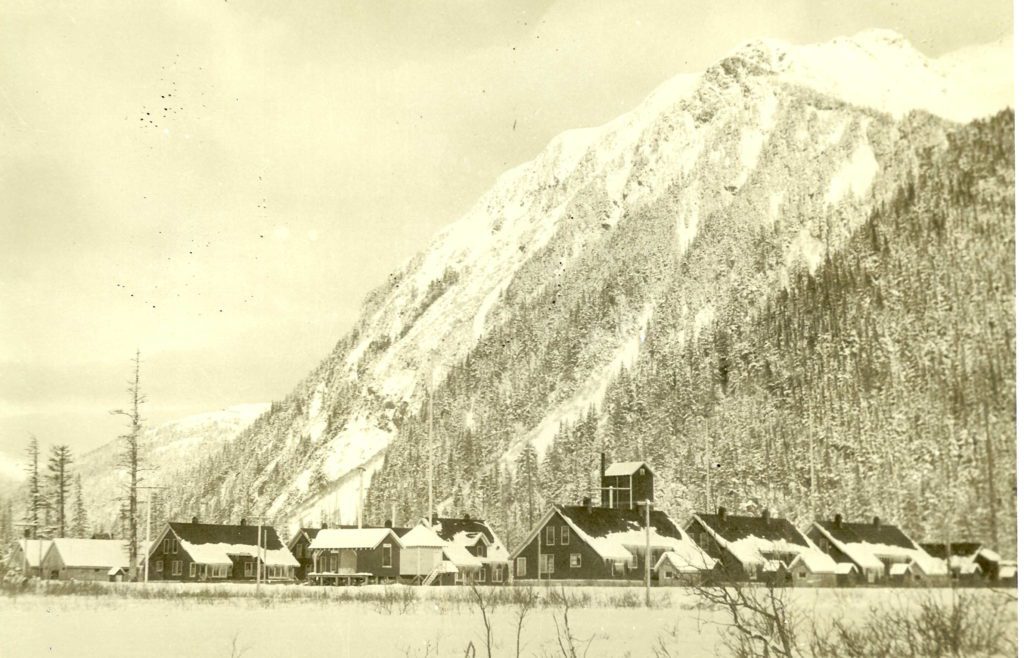Let’s finish up our Naval Radio Station history this month by focusing on Eyak Station, which became important to the Navy as a distant control point and functioned as the Alaska Naval Communications District headquarters. It became a rather large site and during its active life the number of personnel at the station averaged about 20, with never less than a cadre of two officers and ten other ranks. Families too, made their homes at the Mile 7 station.
When the Eyak Station was first commissioned it had five wood-frame shingled roofs, a one-and-a-half story double cottage with a total of ten rooms. These buildings were used to house personnel and had a capacity of two families each. Another wood-frame shingled-roof cottage housed the officer-in-charge. This structure was one-and-a-half stories high and had eight rooms.

In addition to the dwelling units, the station supported a wood frame operating building, a one-story powerhouse, wood sidewalks, a sewer system and water supply. There was also a coal shed with an industrial rail line running through the center of the coal shed. The station was a little mini city with everything it needed to be self-sufficient.
In 1919, a wood frame dormitory was completed and then for the next few years only non-housing construction occurred at the station, including a recreation building. In 1920, a combination water tank and boiler house were built.
The water tank itself was made of wood and had a capacity of 10,000 gallons. It was enclosed in a house and treated on a tower 40 feet high. The boiler house was built under the water tank between the tower supports. It had concrete floors and contained the heating plant for the cottages, dormitory, operating building, and shop. The houses were heated with steam that was coal-fired. The water pipes and steam heat pipes were about five feet above ground surrounding the dwellings.
A small wood-frame shingle roof house was constructed in 1922 to house radio equipment, as well as a wood boat shed and marine ways. Lots of water surrounded the dwellings — everything was built on pilings — but even with water everywhere, fire was a real danger. In the winter of 1922-1923, a fire destroyed the dormitory, the double dwelling behind it and the single dwelling next in line.
In 1923, a large corrugated iron building was put up to house working parties from Puget Sound Navy Yard and to serve as a storehouse. It took the place of the dormitory, but the other buildings were never replaced. In 1924, a small wood frame house, originally built as an icehouse in 1917, was shifted to a new location and equipped as a central firehouse.
















